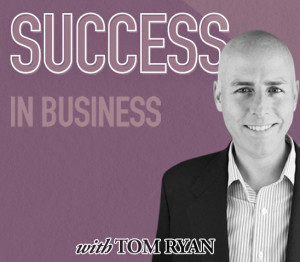 In the entrepreneurial world, there is a profound and definite need for telling the story of a business in the most succinct and compelling way possible. It’s not just about mastering the process of pitching to investors, lenders and potential partners, although those groups are important. The more powerfully you can present the case for your business to anyone and everyone, the easier it will be to do things like win new clients, attract top talent, and make connections with everyone else along the way.
In the entrepreneurial world, there is a profound and definite need for telling the story of a business in the most succinct and compelling way possible. It’s not just about mastering the process of pitching to investors, lenders and potential partners, although those groups are important. The more powerfully you can present the case for your business to anyone and everyone, the easier it will be to do things like win new clients, attract top talent, and make connections with everyone else along the way.
Calling this kind of storytelling a “pitch” allows for a useful shorthand, but what we’re really talking about is creating a clear, concise narrative about why your business matters, and why other people should be paying attention. The same preparation that go into creating a great pitch also allows you to master the tools, methods and best practices for telling your story any time it really matters. If these techniques work during the high-stakes presentation of a formal business pitch setting, they will work anywhere.
A great example of this in action is the classic “elevator pitch.” The concept is simple: If you found yourself on an elevator with someone important with the resources to help you turn your idea into a reality, could you deliver a compelling summary and ignite their curiosity before they stepped off on their floor? You don’t have to win them over during that 30-second ride, you just need to get them interested enough to exchange business cards or schedule a meeting.
If you can’t make the case for your business in a sentence or two, that’s a problem. For every additional second it takes for you to explain what your business is all about, your audience’s attention is going to be that much less focused. It’s not a skill that comes naturally for most people, however. If you struggle with things like the elevator pitch, you’re hardly alone.
As a business coach, I’ve worked with a lot of companies and founders. Almost none of them started out with a good understanding of creating a concise, compelling pitch. With only a handful of exceptions, they all struggled to tell their stories. It was even a challenge for me. I’ve often thought about why this is, and eventually I came up with a theory. It’s easier to talk about our stuff — the products and services we’ve created — than it is to tell a story about how our business is able to help people by solving their problems.
New companies that are just starting out usually don’t have a great story to tell. How could they? They have an idea about solving a problem, but not much else. To build a story, it helps to have things like customer feedback, sales numbers and other kinds of direct reaction from the market. Without this kind of direct experience to draw from, you have to get inventive in the storytelling.
This can mean telling a story of what you believe is going to happen, and about how you anticipate customers will react. This doesn’t mean being dishonest, or completely fabricating the narrative. It simply means telling the best version of the story that you can, and with your best intentions guiding you.
As I mentioned in my previous posts, a powerful pitch is composed of two major parts: The hook and the proof. These two elements aren’t just useful for selling would-be investors on your business idea. The hook alone is a powerful piece of storytelling, and it can be reused to produce a huge variety of business tools like sales presentations and marketing materials. Combined with the detail-rich information from the proof stage, you will find endless ways to use and reuse your pitch.
When someone asks you what it is you do at that startup of yours, the answer should never be a waffling, rambling answer about your products or services. It shouldn’t be a vague answer about what you’re working towards. The answer should always be that one-two business pitch punch of the hook and the proof.
The objective with this series is to provide you with a step-by-step guide for creating the most powerful business pitch possible. It’s going to require some effort on your part, and I’ll be giving you a homework assignment with each post. But if you follow through with each step, at the end of the process you will have a better package for your business pitch than 99% of entrepreneurs out there.
In my next post, I’ll start at the very beginning of the process: The Problem.
